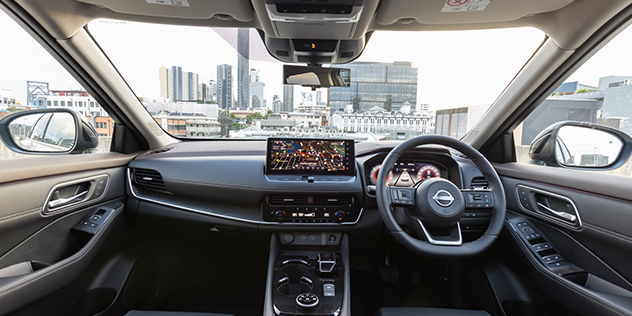2023 Nissan X-Trail e-Power review

How much does the 2023 Nissan X-Trail e-Power cost?
Available in the range’s two flagship models, the e-Power puts a $4200 premium on regular X-Trails to bring the price of the Ti to $54,190 and the Ti-L to $57,190.
Both models use Nissan’s ‘e-4orce’ system to provide all-wheel-drive through two electric motors, with the package billed as a stepping stone for EV-curious customers unwilling to go down the fully electric path.
2023 Nissan X-Trail e-Power power and torque
The e-Power differs from conventional hybrid vehicles in that its turbocharged 1.5-litre three-cylinder petrol engine doesn’t drive the wheels at all.
Instead, it acts as a high-tech generator to charge a 2.1kWh battery for the front and rear electric motors, with a total output of 157kW, although there’s no way to calculate a combined torque figure.
There’s little on the outside to differentiate the e-Power from a regular X-Trail besides its e-Power/e-4orce badging and black trim around the grille.
Inside, comfort and premium equipment are commensurate with the X-Trail’s top two trim levels.

2023 Nissan X-Trail e-Power tech and styling
Among the highlights are a panoramic sunroof, 12.3-inch touchscreen, head-up display, wireless phone charging and Apple CarPlay, and a smart rear-view mirror that can switch to digital when a luggage-crammed cargo area impedes eyesight.
The claimed 6.1L/100km fuel consumption isn’t a huge saving on the regular X-Trail (7.4L/100km) and falls short of competitors like Toyota’s RAV4 Hybrid (4.7L/100km).
How does the 2023 Nissan X-Trail e-Power perform
Periodic checking during our spirited drive loop over hilly backroads showed it hovering around 6.9L/100km, which at least suggests Nissan’s calculation is on point.
While it’s usually fuel savings that make hybrids appealing, the e-Power’s trump card is a driving manner very close to a pure EV.
The e-4orce AWD system reacts up to 10,000 times faster to road conditions than the previous X-Trail, shifting torque between front and rear axles when either loses grip.
The e-Pedal Step mode is activated via a button on the centre console and enables one-pedal driving with regenerative braking, though its quirk of also depressing the brake pedal to its equivalent position can take some getting used to when you need to apply more braking.
Active noise cancellation via a speaker in the luggage area is fairly successful in muting engine noise, which is only really noticeable when you put your foot down.

— Adam Smith
The 2023 Nissan X-Trail e-Power at a glance
Pros: EV-like handling; comfort levels
Cons: Lowers towing capacity from 2000kg to 1650kg


